Best Mexican White Sauce| Easy Homemade Béchamel Sauce Recipe
When it comes to classic culinary creations, few things rival the versatility and creaminess of a well-made mexican white sauce. Also known as béchamel, this smooth, velvety sauce forms the base of countless dishes, adding a touch of elegance and richness to various meals.
Whether you’re a seasoned chef or an amateur cook looking to expand your culinary skills, mastering the art of mexican white sauce will undoubtedly elevate your dishes to a new level. Today I’ll take you through the basics of making a perfect mexican white sauce and explore some delightful recipes to put this culinary gem to use.
This sauce enhance the taste when we spread it in pizza, pasta or other italian/maxican snacks. 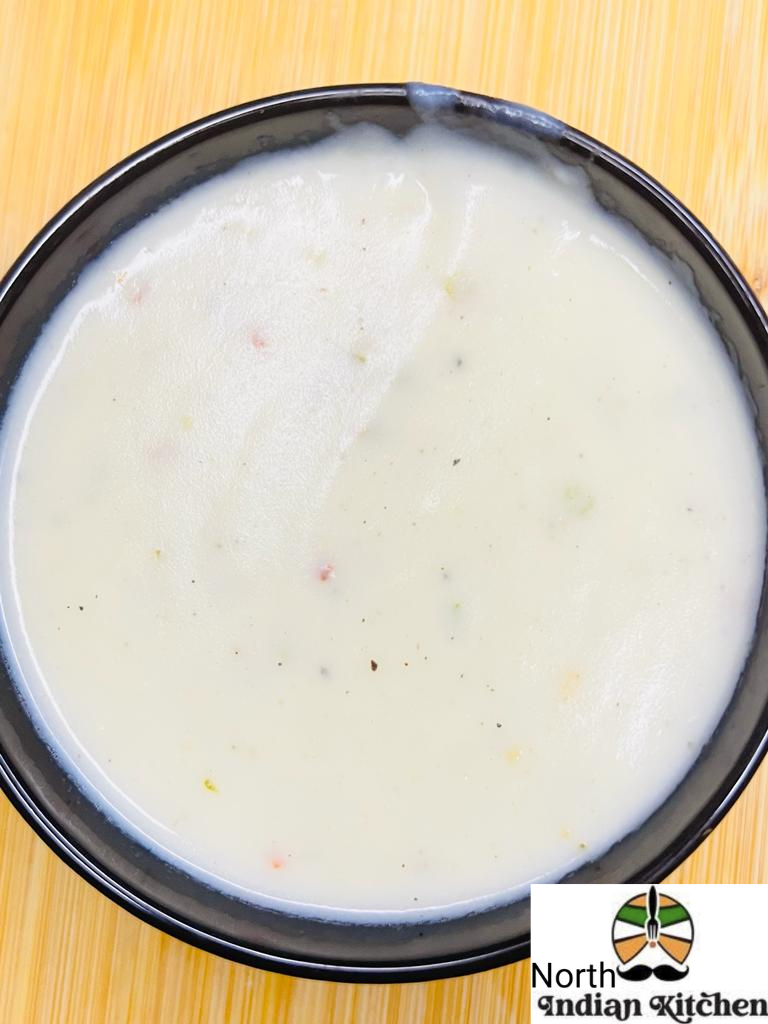
The white sauce, or béchamel sauce, is a timeless culinary treasure that opens up a world of possibilities in the kitchen. With its creamy texture and mild flavor, it can be transformed into a multitude of dishes, each more delightful than the last. By mastering the art of making a mexican white sauce, you’ll have a fundamental skill that will elevate your cooking to a whole new level.
So, don your chef’s hat, whisk in hand, and embrace the wonders of mexican white sauce as you embark on a journey of culinary creativity! Bon appétit!
What is Mexican White Sauce/Bechamel Sauce?
Before diving into the recipe and cooking techniques, let’s clarify what exactly mexican white sauce/bechamel sauce is. A white sauce, or béchamel sauce, is one of the five mother sauces in classical French cuisine. It is made by combining butter, flour, and milk, resulting in a thick, creamy, and neutral-flavored base. This blank canvas allows you to infuse various flavors into the sauce, making it a versatile ingredient for a wide range of dishes.
Making of Mexican White Sauce/Bechamel Sauce
- Melt the butter: In a saucepan over medium heat, melt 1 tablespoon butter until it begins to foam. Be careful not to let it brown.
- Add the flour: Once the butter is melted, add 1 tablespoon all-purpose flour to the saucepan. Stir continuously with a whisk to create a smooth paste, also known as a roux. Keep stirring for about 2-3 minutes to cook off the raw flour taste.
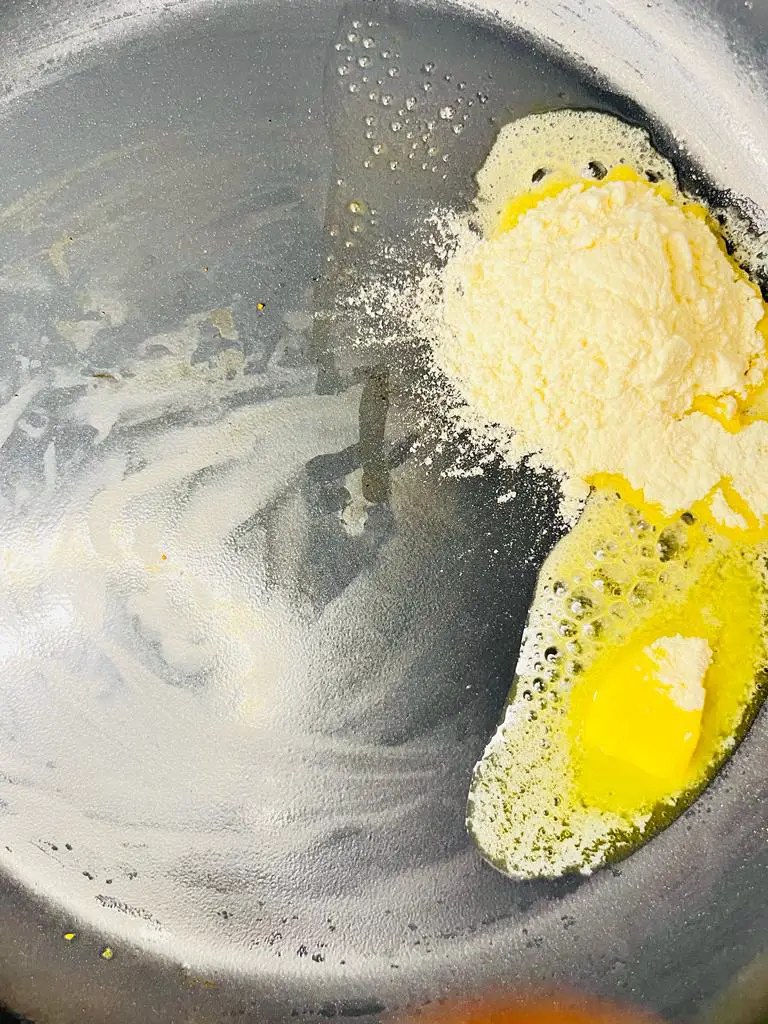
- Gradually add milk: Slowly pour 1 cup milk into the roux while whisking constantly. This will help prevent lumps from forming. Continue stirring until the sauce thickens and reaches a smooth, creamy consistency. This should take around 5-7 minutes.
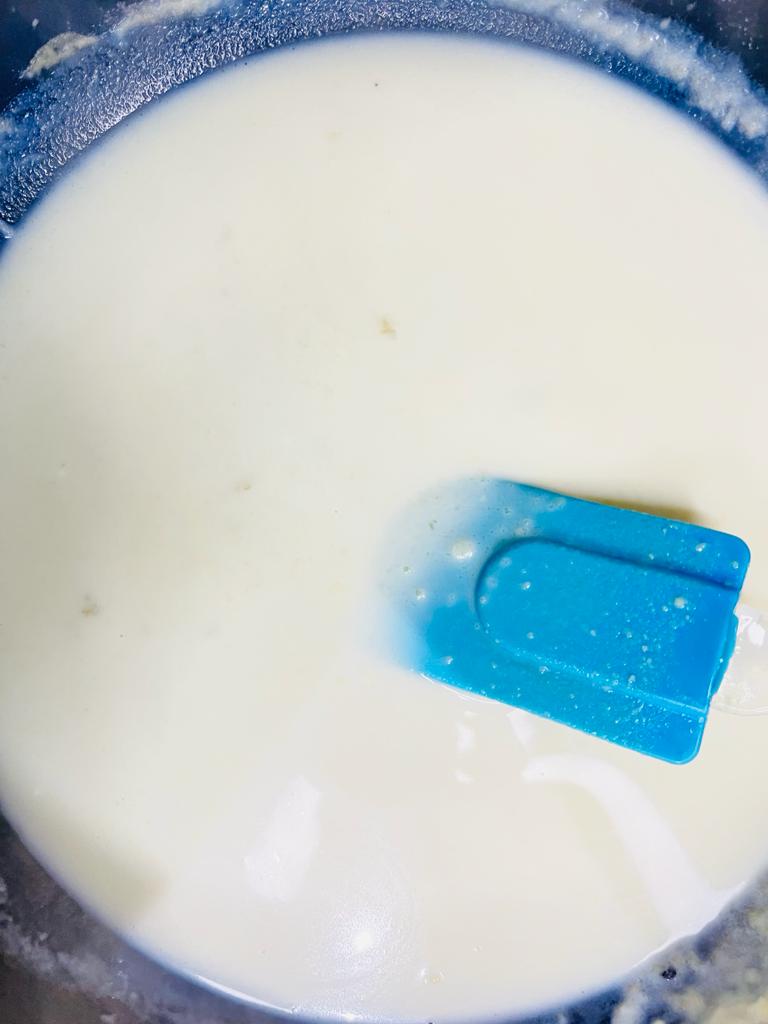
- Season the sauce: Add salt to taste, 1/2 teaspoon pepper, and a pinch of freshly grated nutmeg (if desired) to enhance the flavor of the sauce. Nutmeg adds a subtle, warm depth to the sauce, but it can be omitted if preferred.

- Append 1/2 teaspoon oregano & 1/2 teaspoon chili flakes.
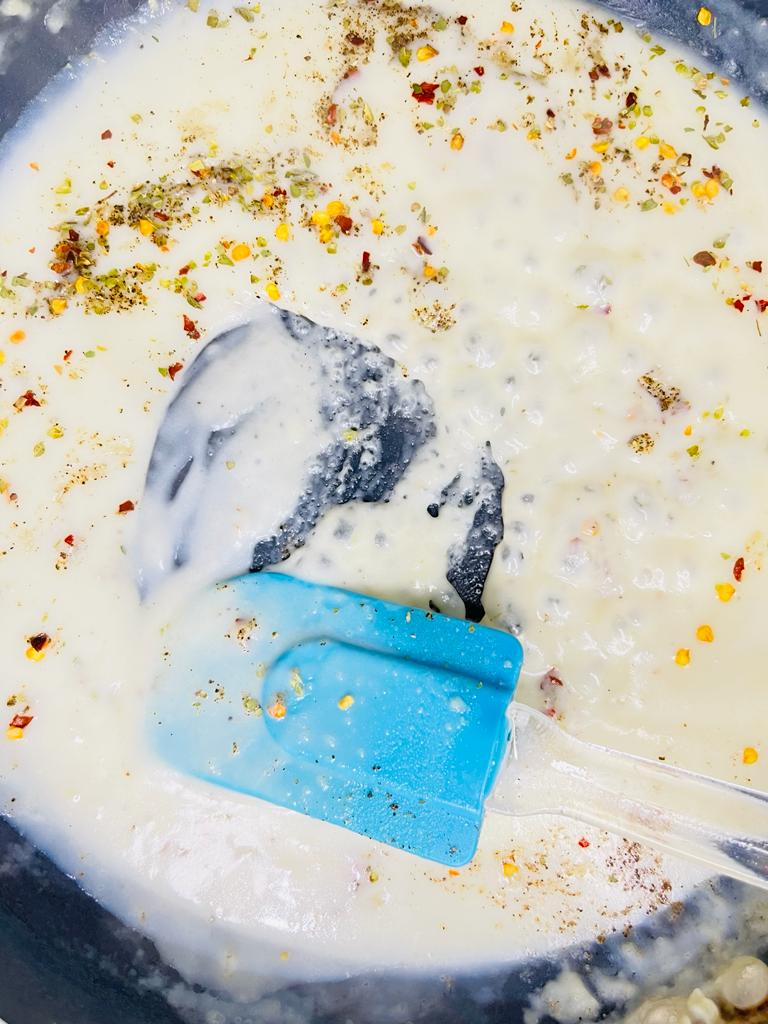
- Final touches: Add 2 tablespoon water in it to adjust the consistency. Once the sauce has thickened to your desired consistency, remove it from the heat. If it becomes too thick, you can add a little more milk too to adjust.
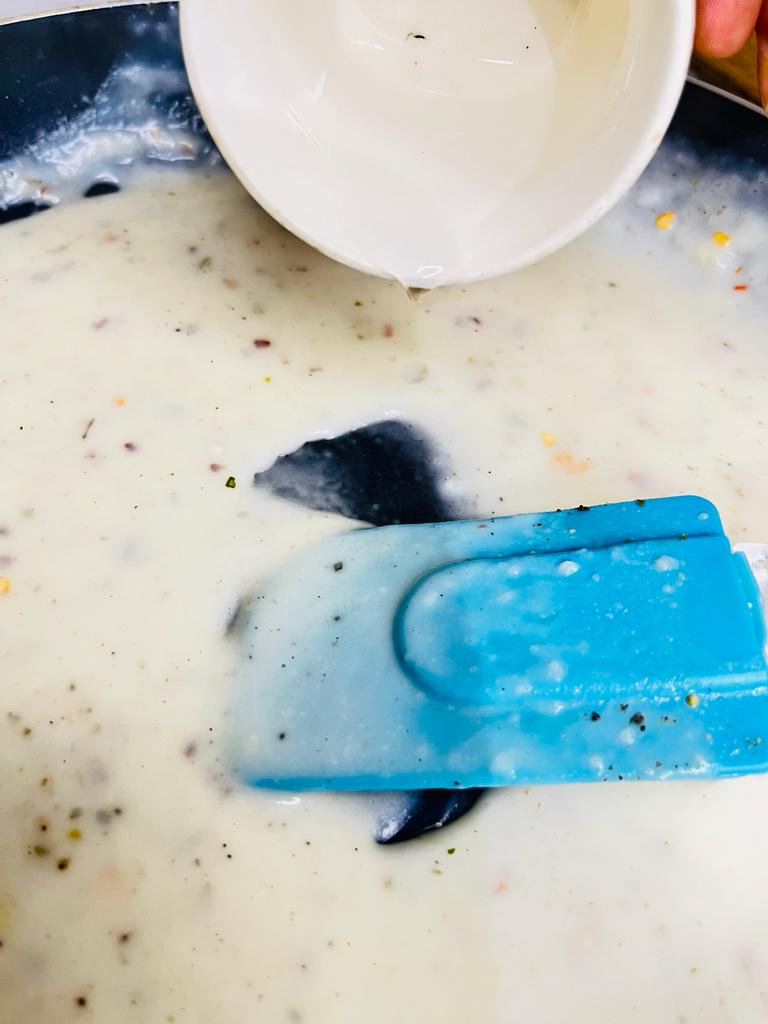
- Your delicious and special white sauce is ready to spread on pizza, burger or any other snack.
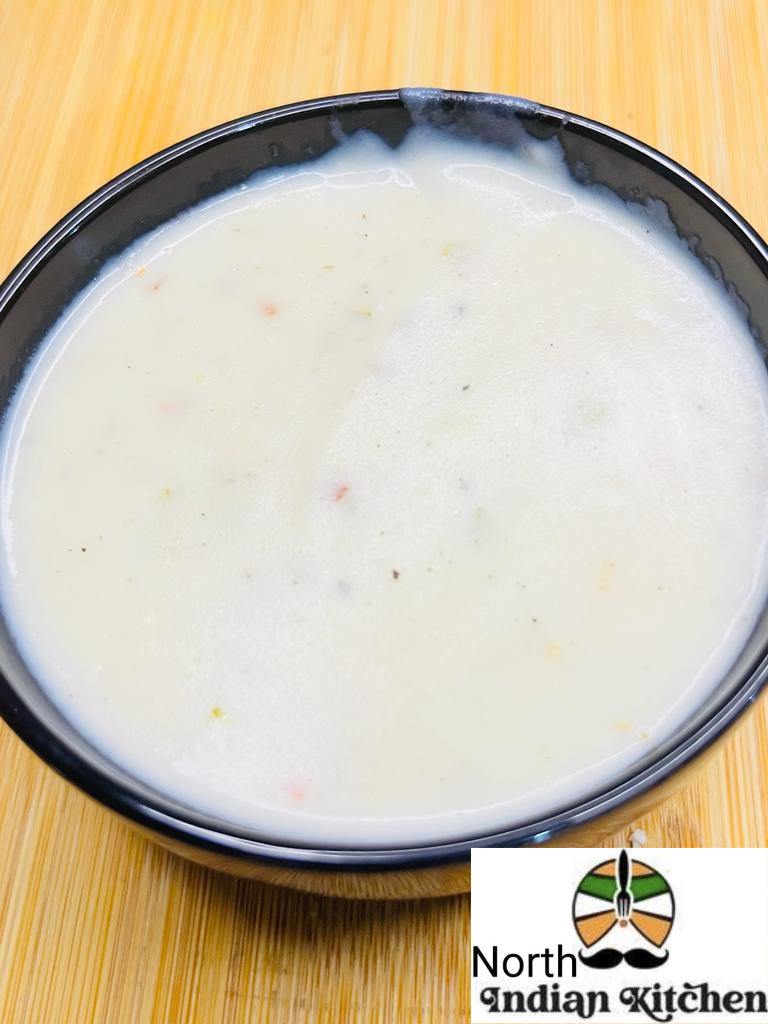
Now that you’ve mastered the basic white sauce, let’s explore some delectable dishes you can create with it.
Delightful White Sauce Recipes
Classic Macaroni and Cheese:
White sauce forms the base of this beloved comfort food. Combine the white sauce with shredded cheddar cheese, cooked macaroni, and bake until bubbly and golden brown for a satisfyingly cheesy dish.
Creamy Chicken Alfredo:
Toss this sauce with al dente fettuccine, grilled chicken, and freshly grated Parmesan cheese for an indulgent pasta experience.
Vegetable Au Gratin:
Create a medley of your favorite vegetables (such as broccoli, cauliflower, and carrots), top them with white sauce, sprinkle with breadcrumbs and cheese, and bake until tender and golden.
Chicken Pot Pie:
Combine leftover roasted chicken, mixed vegetables, and white sauce in a pie crust for a hearty and delicious family meal.
Expert Tips
Use High-Quality Ingredients: The quality of your ingredients will significantly impact the final outcome of your white sauce. Choose fresh, whole milk and good-quality unsalted butter for the best flavor and texture.
The Roux Technique: The roux, a mixture of butter and flour, is the foundation of a white sauce. To avoid lumps in your sauce, ensure the roux is smooth and free of any uncooked flour. Cook the roux for a couple of minutes to eliminate the raw flour taste.
Temperature Control: Use medium heat when melting the butter and cooking the roux. Avoid high heat to prevent the butter from browning or the flour from burning, which can negatively affect the taste of your sauce.
Gradual Milk Addition: When adding milk to the roux, do it gradually while continuously whisking to ensure a smooth, lump-free texture. Adding the milk too quickly can create lumps that are challenging to get rid of.
Warm the Milk: For an even smoother sauce, warm the milk slightly before adding it to the roux. This can help reduce the chances of curdling and make it easier to achieve a silky consistency.
Whisk Vigorously: Vigorous whisking is essential to prevent lumps from forming. Whisk continuously and thoroughly, especially around the edges of the saucepan where lumps often hide.
Seasoning: Don’t underestimate the importance of seasoning. White sauce can be quite bland on its own, so season with salt and pepper to taste. A pinch of freshly grated nutmeg can add a subtle depth of flavor, but use it sparingly as it can easily overpower the sauce.
Consistency Adjustment: If your white sauce becomes too thick, you can adjust the consistency by adding a little more milk. If it’s too thin, continue cooking for a few more minutes until it reaches the desired thickness.
Use a Non-Reactive Saucepan: When making white sauce, use a non-reactive saucepan made of stainless steel, enamel-coated, or non-stick material. Reactive pans made of aluminum or copper can affect the taste and appearance of the sauce.
Experiment with Flavors: While the classic white sauce is delightful on its own, feel free to experiment with additional flavors. You can infuse the milk with herbs, garlic, or onion before making the sauce, or stir in some grated cheese for a cheesy variation.
Storage: White sauce is best served fresh, but if you have leftovers, store them in an airtight container in the refrigerator for up to three days. Reheat gently on the stovetop, stirring constantly to maintain the smooth texture.
FAQs
Q. What is white sauce, and what is it used for?
A. White sauce, also known as béchamel, is a classic French sauce made from butter, flour, and milk. It forms a smooth, creamy base and is used as a foundation for various dishes such as pasta, lasagna, casseroles, and gratins. It can also be used as a sauce for vegetables, chicken, and seafood.
Q. How can I avoid lumps in my white sauce?
A. To prevent lumps in your white sauce, ensure that you whisk the butter and flour together thoroughly to form a smooth roux before adding the milk. When adding the milk, do it gradually while whisking continuously to create a smooth, lump-free sauce.
Q. Can I use a different type of milk for white sauce?
A. While whole milk is the most common choice for white sauce due to its creaminess, you can use other types of milk such as 2% or even skim milk. Keep in mind that the sauce’s texture and richness may vary based on the type of milk used.
Q. Can I make a gluten-free version of white sauce?
A. Yes, you can make a gluten-free white sauce by using a gluten-free all-purpose flour blend or another gluten-free thickening agent like cornstarch or rice flour in place of regular flour.
Q. How do I store leftover white sauce?
A. If you have leftover white sauce, let it cool to room temperature and store it in an airtight container in the refrigerator for up to three days. Reheat it gently on the stovetop, stirring constantly to maintain its smooth consistency.
Q. Can I freeze white sauce?
A. While it is possible to freeze white sauce, it may separate or change in texture slightly after thawing. If you plan to freeze it, place the cooled sauce in a freezer-safe container and leave some room for expansion. Thaw the sauce in the refrigerator and gently reheat it on the stovetop, whisking as needed to restore its consistency.
Q. Can I reheat white sauce in the microwave?
A. Yes, you can reheat white sauce in the microwave. However, use a low power setting and stir the sauce frequently to ensure even heating and avoid overheating, which can lead to a lumpy or curdled texture.
Q. What are some common variations of white sauce?
A. There are several variations of white sauce you can explore. For example, you can add sautéed onions, garlic, or herbs like thyme or rosemary for added flavor. Another option is to stir in different types of grated cheese, such as Parmesan, cheddar, or Gruyere, to create a cheesy white sauce.
Q. Can I make white sauce ahead of time for a large gathering?
A. While it’s best to serve white sauce fresh, you can prepare the roux ahead of time and store it separately from the milk. When ready to serve, heat the roux and gradually whisk in the warm milk to create the sauce. This method helps preserve the sauce’s smooth texture and reduces the risk of lumps.
Q. Is white sauce suitable for people with lactose intolerance?
A. For individuals with lactose intolerance, making a lactose-free version of white sauce using lactose-free milk or a non-dairy milk alternative, such as almond milk or oat milk, can be a suitable option. Additionally, using lactose-free butter can help make the sauce more tolerable for those with lactose sensitivity.
Enjoyed the Recipe then Try our Other Sauce Recipes
Please be sure to rate this recipe or leave a comment below if you have made it. For more vegetarian & non – vegetarian inspirations, Sign Up for my emails or follow me on Instagram, Youtube, Facebook, Pinterest or Twitter.
Mexican White Sauce (Bechamel Sauce) Recipe Card
Equipments
Ingredients
- 1 tablespoon Butter
- 1 tablespoon Flour(maida)
- 1 cup Milk(whole milk)
- Salt to taste
- ½ teaspoon Black Pepper powder
- A pinch of Nutmeg(grated)
- ½ teaspoon Oregano
- ½ teaspoon Chili Flakes
- 2 tablespoons Water/as required
Instructions
- In a saucepan over medium heat, melt 1 tablespoon butter until it begins to foam. Be careful not to let it brown.2. Once the butter is melted, add 1 tablespoon all-purpose flour to the saucepan. Stir continuously with a whisk to create a smooth paste, also known as a roux. Keep stirring for about 2-3 minutes to cook off the raw flour taste.3. Slowly pour 1 cup milk into the roux while whisking constantly. This will help prevent lumps from forming. Continue stirring until the sauce thickens and reaches a smooth, creamy consistency. This should take around 5-7 minutes.4. Add salt to taste, 1/2 teaspoon black pepper powder, and a pinch of freshly grated nutmeg (if desired) to enhance the flavor of the sauce. Nutmeg adds a subtle, warm depth to the sauce, but it can be omitted if preferred.5. Append 1/2 teaspoon oregano & 1/2 teaspoon chili flakes.6. Add 2 tablespoon water in it to adjust the consistency. Once the sauce has thickened to your desired consistency, remove it from the heat. If it becomes too thick, you can add a little more milk too to adjust.Your White Sauce is ready
Video
Notes
- For best results always use whole milk as it has good consistency.
- To make this use salted or unsalted butter can be used. Both are acceptable.
- Make sure that sauce should not be more thick or thin. It should be in normal consistency.


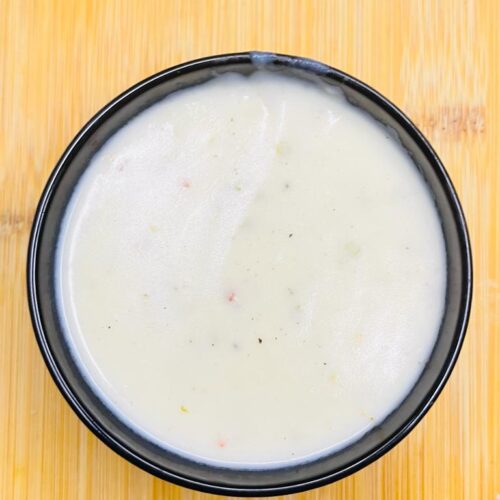
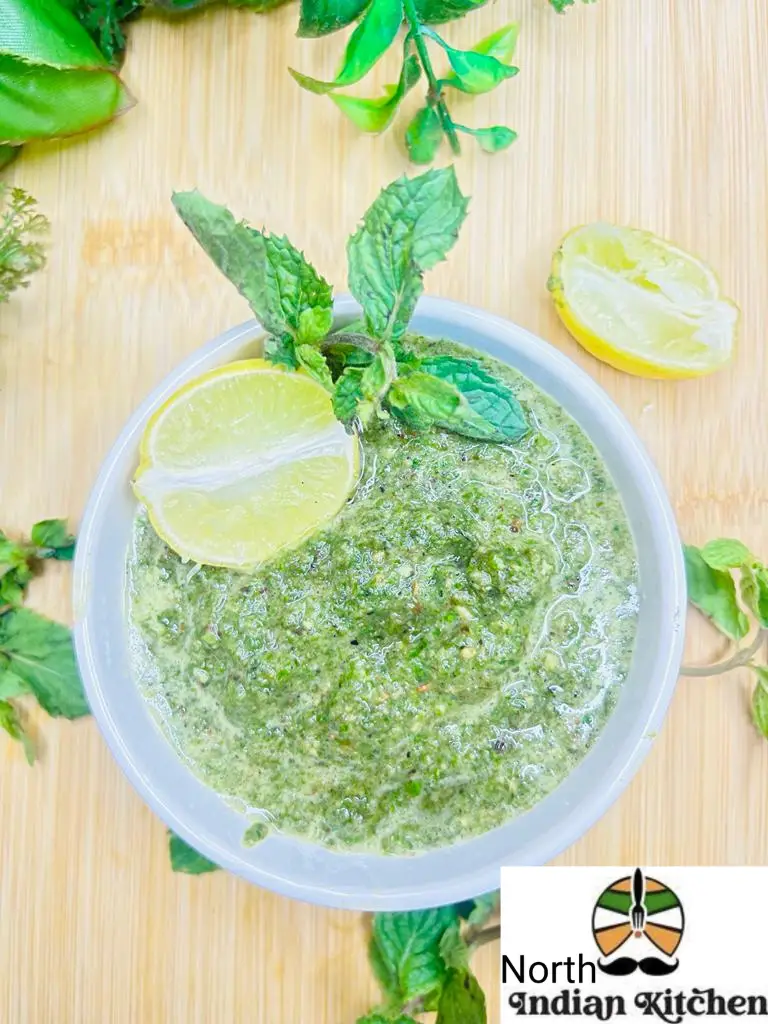

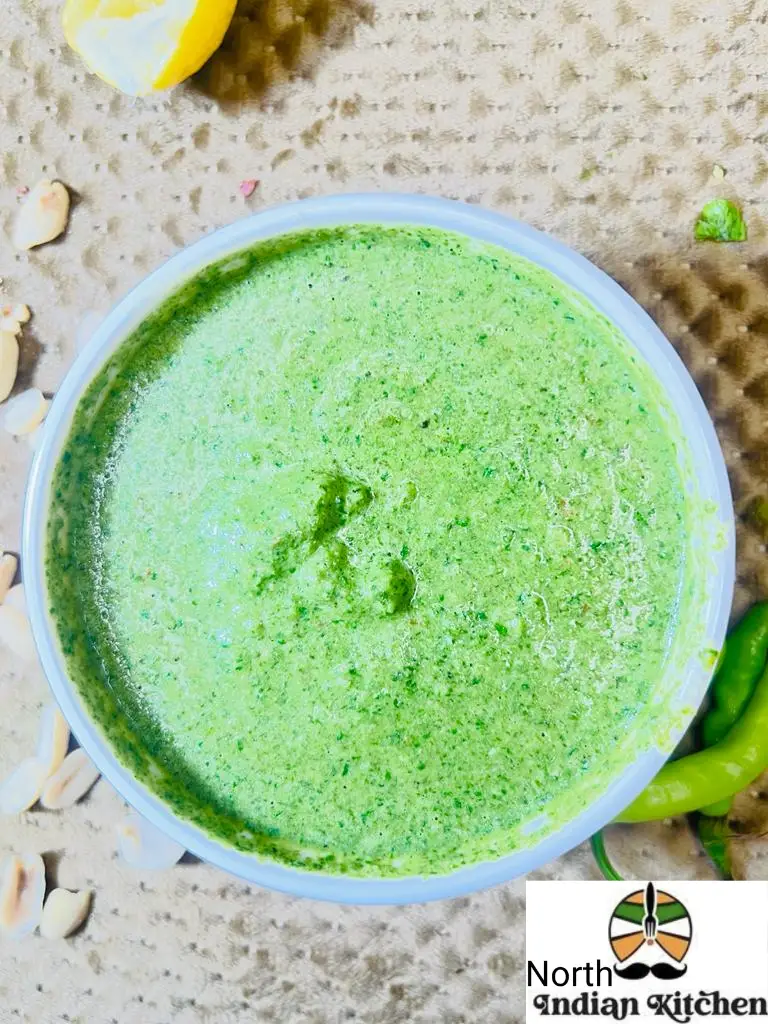
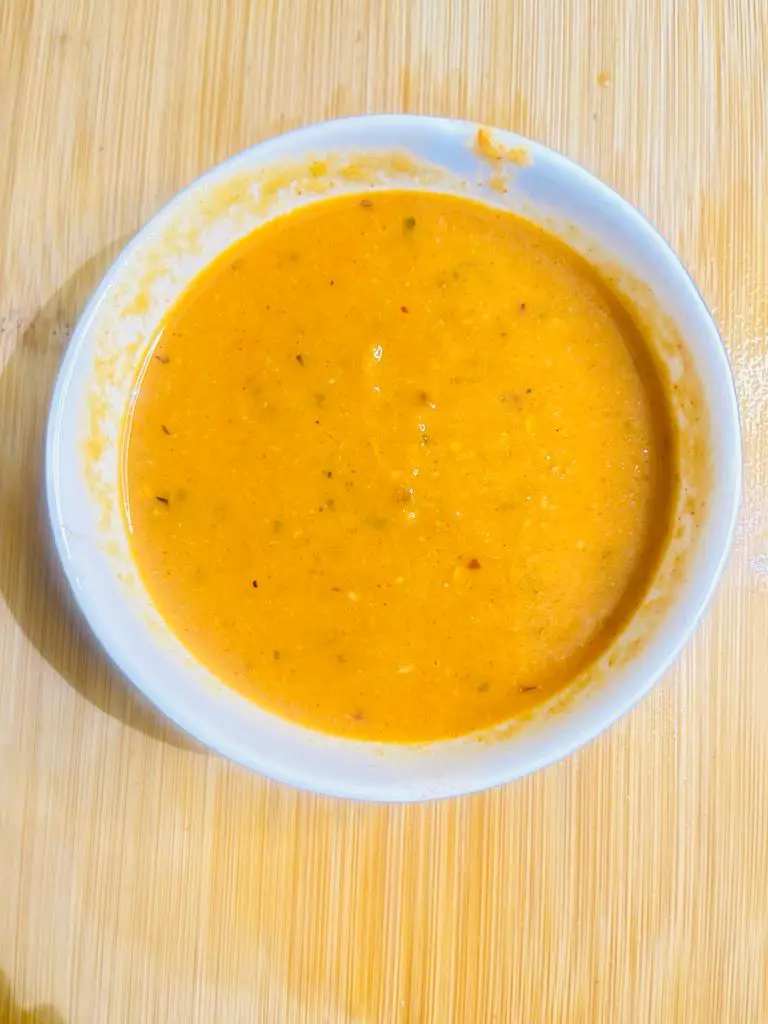

Soo easy sauce recipe. Thanks
Thanks for your feedback. We are very glad that you like our recipes.